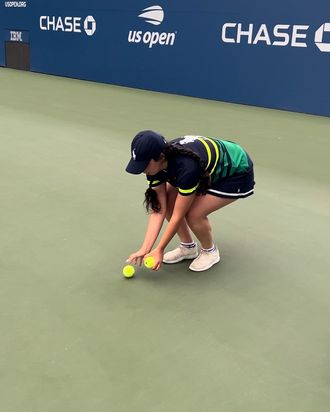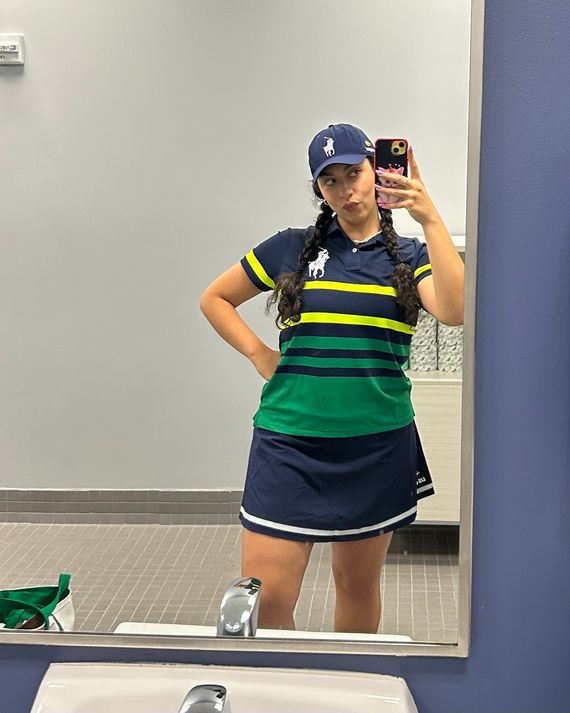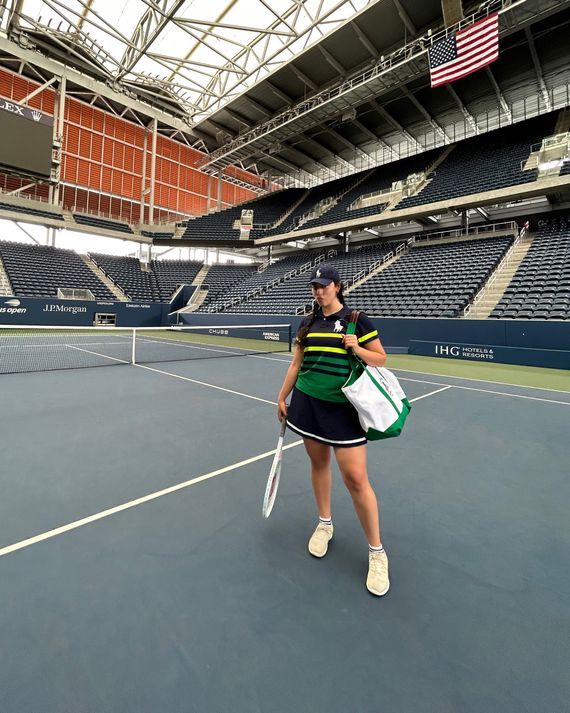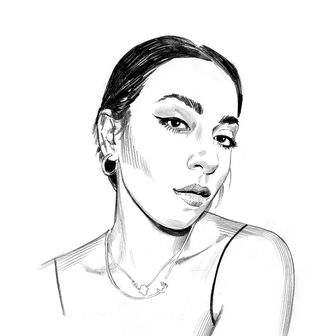
Nearly every adult you may encounter has a formative memory of running the mile in middle-school gym class. It was, for many of us, the most dreadful day of the year: It often involved your shorts riding up in places they shouldn’t, upperclassmen gawking and snickering at you as you attempted to prove your athletic prowess, and/or sweating profusely in front of a crush or, in my case, tripping and falling down an asphalt hill in front of my crush and the entire class. The worst part of it all, though, was the anticipation: the knowledge that a feat of true acrobatic exertion was imminent and the subsequent coursing dread that ran through your body in trepidation.
Those memories recently came flooding back as I made my way to try out for a highly coveted position that also required people watching me run: U.S. Open ball person. Over 1,000 people try out every year, and only 150 are selected. If you’re good, you make it past the trials. If you’re truly excellent, you become TikTok famous. I was just hoping to share a court with Coco Gauff, even if it meant scrambling like a ground squirrel in front of 35,000 people.
A few years ago, I wouldn’t have given this tryout a second thought; I was a long-distance runner and perhaps even considered myself athletic adjacent. In fact, my overzealous competitive side would have welcomed it — and fawned over the possibility of someone from the official ball crew watching me at work and maybe even telling me that I, along with several other people aged 14 and up, had what it takes. But I have since been sidelined for a few years owing to a back injury, and much of my muscle memory has long been forgotten. I could see it now: my diving for a tennis ball in front of Carlos Alcaraz, hearing a pop somewhere in my lumbar spine, and then having to be dragged off the court feetfirst and red-faced.
Upon my arrival at the tennis village, I was whisked into the underbelly of the park, the catacombs where forgotten relics like winners’ podiums are stored in the offseason. I dropped my stuff in a break room that looked frozen in 1991, and I changed into the official Ralph Lauren 2023 ball-person uniform: a navy tennis skirt; a green, yellow, and navy striped shirt emblazoned with the famed Polo logo; and a matching hat. The brand has been outfitting the official ball people at the Open for 18 years, so at the very least, I looked the part.


I walked through the hallways and eventually was spit out through a tunnel at the Louis Armstrong Stadium, where I presume renowned athletes had once exited as well. I pretended I was one of them, miming a camera-shy tennis prodigy as a kind on-site publicist shoved a phone in my face, recording my every motion with the flash on. Being a phony feels so good sometimes.
Despite my brief stint of playing pretend, my nerves were still jittery. I worried I was about to step out into a stadium filled with dozens or even hundreds of other hopefuls and judges. To my relief, the stadium was empty apart from a few official ball people. But to my dismay, those watching me and running my tryout were U.S. Open ball-crew veterans. On the court, three-time ball person Aarshia Hukmani, 18, and six-time ball person Rohit Talreja, 26, greeted me. Typically, applicants are expected to fill out a questionnaire riddled with queries such as “How long does it take you to run a mile?” (childhood trauma) and ones about your “athletic ability” and “knowledge of tennis.” This is coupled with a physical test. “It’s a highly, highly sought-after position,” said the head of the U.S. Open ball crew, Tiahnne Noble, who was leading the tryout.
Clad in my head-to-toe Ralph Lauren gear, I started the drills: Noble hit a ball toward the net. I ran from the sideline and grabbed it as quickly as I could, scrambling to get a good grip as my long pink manicured nails scraped the court, but I managed to snatch it. I ran back to the sideline and tried to roll it to the ball-crew member standing at the edge of the court, but in the moment, crouching on one knee as the crew had shown me, I heard a creak. I suddenly became aware of a dull pulling somewhere in my knee that hadn’t quite metamorphosed into pain but surely would by the end of the day.
After three sets of serving, I was panting. I was like a cat chasing a mouse on roller skates. The other ball crew members and I were giggly and good-humored, but I suddenly realized I wasn’t there to giggle. I was there to win, and my competitive side kicked in. The fear began to dissipate (though by this point, it had been replaced by sheer embarrassment). I really, truly, just a little bit began to get the hang of it. Consider those balls captured.
Just when I hit my stride, however, it was time to swap with the other ball person. I was now tasked with receiving tennis balls that were being rolled post-serve and bouncing them to the player on the court. I imagined what it must be like to be a crew member supplying Serena Williams or Naomi Osaka with a ball. The thought made me want to throw up, or perhaps that was the sprints I had just done.
I got into position: feet apart and hands behind my back, anticipating the deep squat required for this placement. One ball rolled through my legs. Then another. And another. Talreja and Noble showed me how to adjust my hands, flattening each one and placing them firmly together to form a backboard to give myself more surface area for catching. Everything changed. My ball retrieval became, if I do say so myself, a little seamless. My body fell into a groove, and I wondered if I maybe did have what it takes to be a ball person. I thought to myself, I must be at least in the top 100 who tried out, right?
I was not. After our physical test, Noble let me know that I needed “a little bit more practice” to make the official team. I placed around 250th out of the 1,000 applicants. She assured me, though, that I “got better toward the end” of the tryout. I could barely hear a single word she said over the ego that was quickly inflating within me. Here I was, across from the head ball-crew person at the U.S. Open, and she was telling me, a failed middle-school miler and formerly athletic-adjacent person, that I had almost made the cut — that I was almost good enough to share the court and wear the famous man-on-a-horse logo alongside the best in the biz.
The high from that alone was intoxicating, so I did what any almost winner would do: I sat atop the referee stand to pose for some photos and promptly left to order myself some crinkle-cut fries and a Diet Coke.


